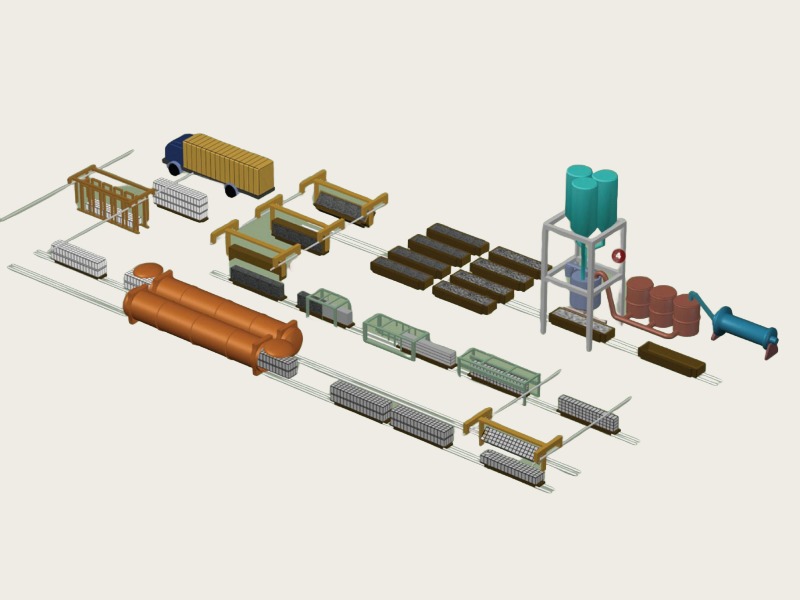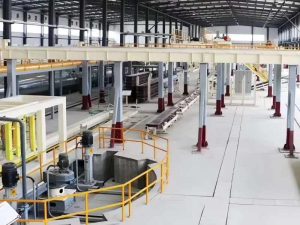Aerated Concrete Block Making Machine with Custom Solutions
Each production Section can be designed with semi-automatic type or fully automatic type according to your needs. From factory directly with wholesale price.
Production capacity: 30,000m³/Y to 600,000m³/Y
Jenis: separa automatik/ automatik sepenuhnya
Certificates: CE/ISO/ASME certifications
Supply customized solutions and turnkey projects based on your needs.
7*24 Support

Aerated Concrete Block (also known as AAC Block) is a lightweight, high-strength building material widely used in walls, partitions and insulation for residential, commercial and industrial projects.
Our Aerated Concrete Block Making Machine is the top choice for building materials companies producing autoclaved aerated concrete bricks efficiently. Designed around your core needs, it delivers optimal efficiency, strong adaptability and reliable after-sales support.
Our Aerated Concrete Block Making Machine supports both semi-automatic and fully automatic modes, fitting small, medium and large production capacities flexibly. It easily makes AAC bricks up to industry standards, and can fine-tune parameters based on your raw material features, ensuring uniform density and qualified strength of finished products.
Our Aerated Concrete Block Making Machine makes AAC blocks and panels using low-cost raw materials (like fly ash, quartz sand, cement, and lime). The process is streamlined: automated batching, uniform mixing, quantitative pouring, high-precision cutting, and high-pressure autoclaving.
Various Capabilities of Aerated Concrete Block Making Machine
Aerated Concrete Block Making Machines are divided into small, medium and large scales based on production capacity.

Mini/small Aerated Concrete Block Making Machine
Capacity: 30000-100000 m3/year
Autoklaf: 1-3 sets
Factory: about 4000-10000m2
Types: semi-automatic/ fully automatic
Features: low initial investment, high flexibility.
Suitable for: Start-ups or enterprises with limited investment and small market demand.
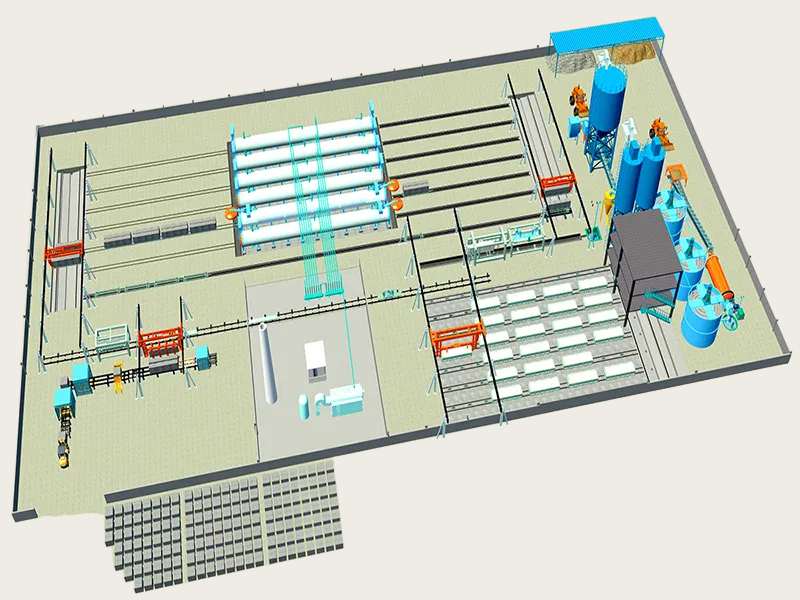
Medium-Scale Aerated Concrete Block Making Machine
Capacity: 100000-200000 m3/year
Autoklaf: 4-8 sets
Factory: about 10000-20000m2
Type: semi-automatic/ fully automatic
Features: stable production capacity, controllable costs, flexibility, large-scale production, etc.
Suitable for: Enterprises with a certain market share and stable demand.
Price of Aerated Concrete Block Making Machine
Small Aerated Concrete Block Making Machine price:
- Price range: $150,000- $300,000.
- Influencing factors: Actual annual output, brand, quality of key components, additional functions, etc.
- Example: 50,000 m³ Aerated Concrete Block Making Machine with reliable components costs around $250,000.
Medium-scale Aerated Concrete Block Making Machine price:
- Price range: $500,000- $1,000,000.
- Influencing factors: Annual output, automation degree, performance of key equipment, after-sales service.
- Example: A 150,000 m³ Aerated Concrete Block Making Machine with advanced automation costs around $800,000.
Large Aerated Concrete Block Making Machine price:
- Price range: Over $1,500,000. Super-large lines (400,000 m³/year and above) can reach $3,000,000 .
- Influencing factors: Large-scale equipment, high-end intelligent control systems, energy-saving technologies, large-capacity autoclave groups, after-sales service.
- Example: A 300,000 m³/year Aerated Concrete Block Making Machine with top configuration costs around $2,500,000.
Reliable Aerated Concrete Block Making Machine Manufacturer
20 years of expertise: A full range of semi-automatic and fully-automatic production lines for Mini, Medium, and Large sizes.
EPC global projects exceeding 100, exports to over 50 countries, and CE/ISO/ASME certifications.
Guarantee of Turnkey+remote operation and maintenance, with 24/7 technical support.
We’re a professional Aerated Concrete Block Making Machinee manufacturer with over 20 years of industry experience and advanced technology. We specialize in high-quality semi-automatic and fully-automatic production line equipment.
Our Aerated Concrete Block Making Machine is well-recognized at home and abroad, exported to Southeast Asia, the Middle East, Africa, Europe and more. We’ve won praise for reliable quality, great performance and full after-sales service. We also offer customized solutions to match your production site and capacity needs perfectly.
Aerated Concrete Block Making Machine Process
Raw material process → Batching and Mixing → Pouring → Static pre-curing → Cutting → Autoclaving Curing → Finished product Processing
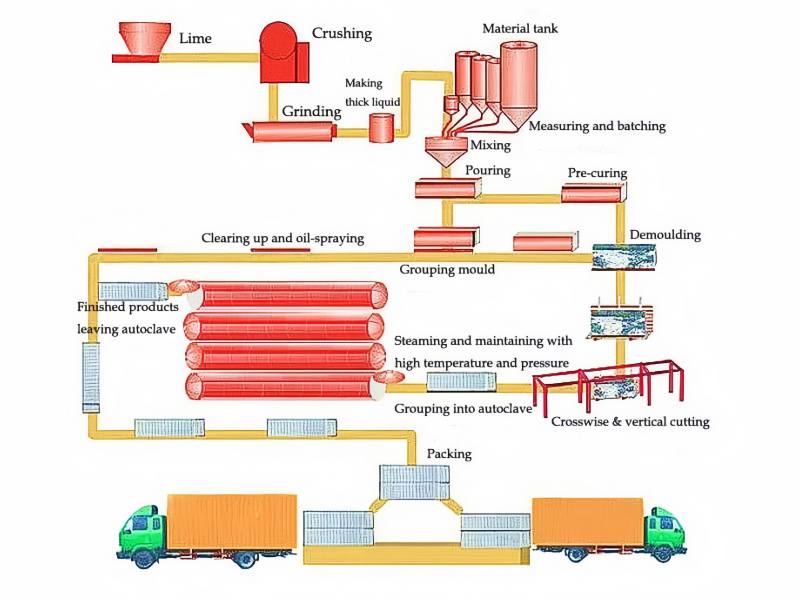
1. Raw Material Processing: Sand is crushed and ground to the desired fineness. Cement, lime, and gypsum are stored in silos, and aluminum powder is mixed with water to form an aluminum slurry.
2. Batching and Mixing: The various raw materials are weighed according to precise proportions and then thoroughly mixed in a mixer to form a uniform slurry.
3. Pouring: The mixed slurry is poured into steel molds. The size and shape of the molds can be designed to meet the desired block specifications.
4. Static Pre-curing: The molds containing the slurry are transported to a pre-curing area where the slurry gradually hardens under suitable temperature and humidity conditions to achieve initial strength. This process typically takes several hours.
5. Cutting: After the slurry is pre-cured, it is cut into the desired size and shape using high-precision cutting equipment using steel wire or blades.
6. Autoclave Curing: Blocks are placed in an autoclave and cured for several hours at temperatures of 175-200°C and pressures of 10-15 bar, significantly enhancing the blocks’ strength and durability.
7. Finished Product Processing: After autoclave curing, the blocks are removed from the autoclave and transported to a storage area. After inspection and packaging, they are ready for shipment.
Raw Materials of AAC block
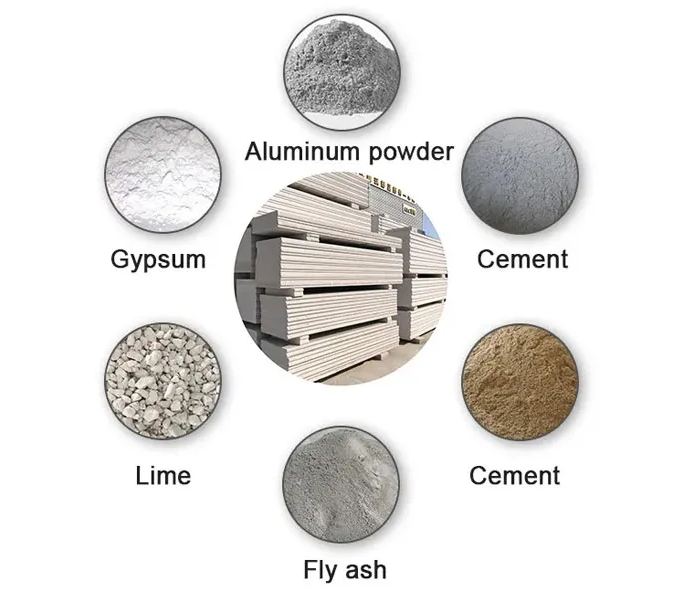
- Cement (Portland Cement): Acts as a primary binder, providing strength and durability to the blocks. Typically, 43 or 53-grade OPC is used.
- Fly Ash or Sand: Serves as the main siliceous material. Fly ash, a byproduct of coal-fired power plants, is an eco-friendly alternative to sand, providing the necessary silica content.
- Lime: A key calcareous material that reacts with other components to form the binding matrix and contributes to the chemical reactions during production.
- Gypsum: Added in small quantities to regulate the setting time and improve the workability of the mix.
- Aluminum Powder or Paste: Functions as a foaming agent. It reacts with lime and water to produce hydrogen gas, creating the characteristic porous, lightweight structure.
- Water: Essential for the hydration of cement and lime, and to facilitate the chemical reactions necessary for the setting and hardening of the blocks.
These materials are carefully proportioned and mixed to form a slurry, which is then cast, pre-cured, cut, and finally autoclaved to produce the finished AAC blocks.
Hot-sale Aerated Concrete Block Making Machine
We can supply high-quality Aerated Concrete Block Making Machine, with annual capacities from 30,000 m³ to 600,000m³ per year.
Below are some common models of Aerated Concrete Block Making Machine. We can customize machines according to your specific needs.
No matter how much production you need or what configuration you need, our professional and experienced technicians can give you a satisfactory solution.
| Annual Production | Price (USD) | Core Configuration |
|---|---|---|
| 50,000 m³ | 0.8–1.1 M | Ground-turning cutting, 2×31 m autoclaves |
| 100,000 m³ | 1.5–1.9 M | Air-turning cutting, 3×31 m autoclaves |
| 150,000 m³ | 2.1–2.6 M | Robotic palletizing, 4×31 m autoclaves |
| 200,000 m³ | 2.8–3.5 M | Six-sided cutting, 4×37 m autoclaves |
| 300,000 m³ | 4.0–4.8 M | Dual cutting lines, 6×37 m autoclaves |
| 400,000 m³ | 5.5–6.5 M | Fully automatic air-turning, 8×37 m and above autoclaves |
Main Equipment in Aerated Concrete Block Making Machine
1. Jaw Crusher
Function: Crushes large lumps of raw materials (e.g., limestone, gypsum) into 50-150 mm pieces. This makes subsequent fine grinding easier, so it is a key equipment for raw material pretreatment.
Structure: Has a deep-chamber crushing chamber formed by a fixed jaw plate and a movable jaw plate. The chamber is lined with replaceable, impact-resistant high-manganese steel tooth plates.
Capacity Range: Common models range from 100 to 500 t/h. The motor and main unit are integrated on a steel frame base, occupying only 4-6 m² of floor space.
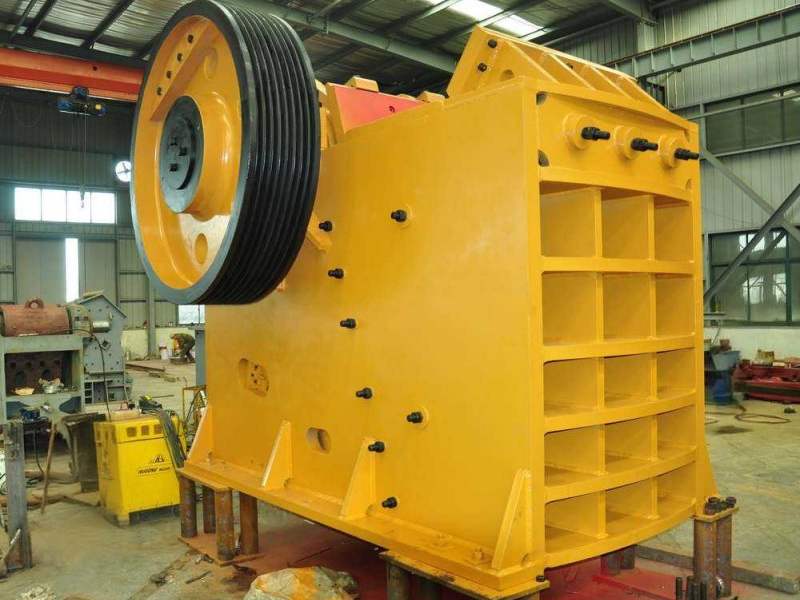
2. Ball Mill
Function: Grinds crushed lime, sand, or fly ash into fine powder (80-400 mesh, equivalent to 0.2-0.045 mm) to boost material reactivity.
Structure: Consists of a horizontal cylinder, wear-resistant liner, and steel ball media. Driven by a motor, reducer, and large gear.
Key Parameters: Cylinder diameter 1.2-2.4 m, ball load 5-30 t, power 55-800 kW.
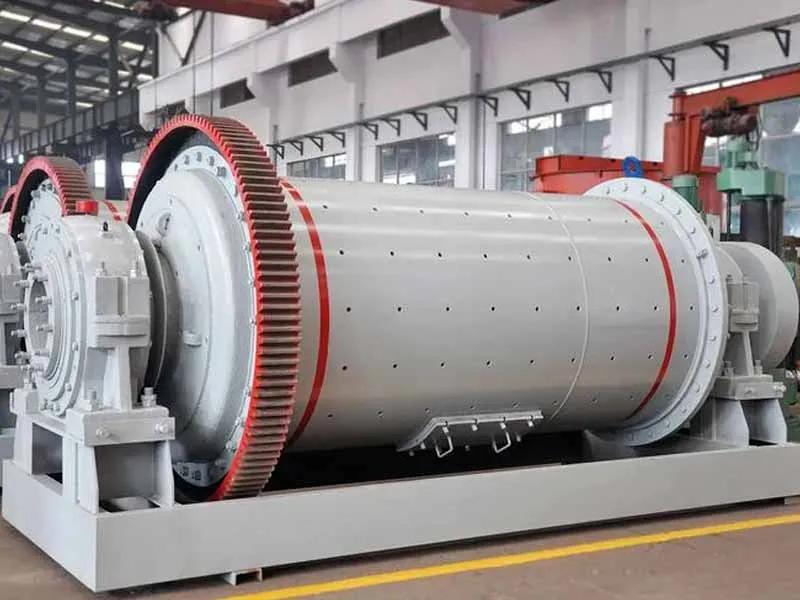
3. Batching System
Function: Accurately weighs raw materials (cement, lime, fly ash, aluminum powder) and water according to the recipe, with an error of ≤ ±0.5%. It is equipped with multiple silos, metering devices, and conveying equipment.
Module components: Includes electronic scale, screw feeder, pneumatic butterfly valve, and PLC touch screen. Supports one-touch recipe call, and completes batching in 30 seconds.
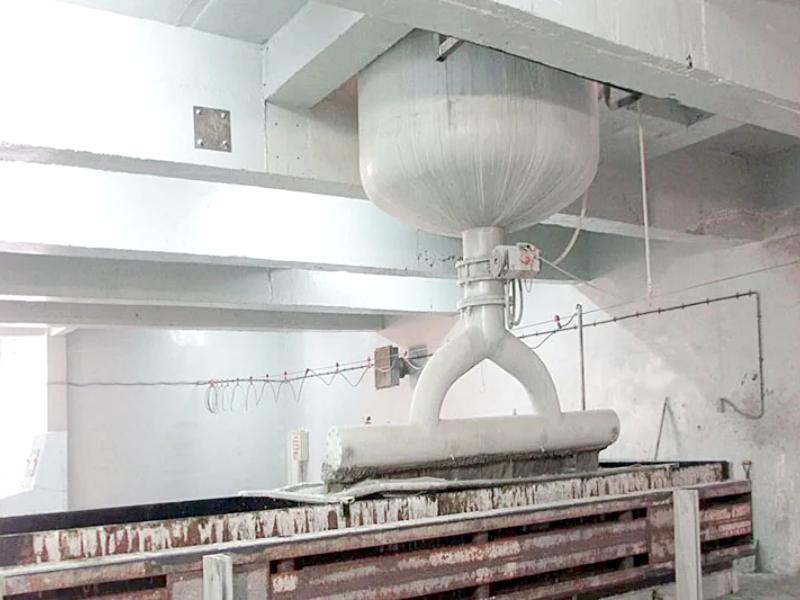
4. Mixing & Casting Machine
Function: Rapidly mixes weighed dry materials with water and aluminum powder into a fluid slurry, which is then poured into a mold for foaming.
Features: Twin-shaft forced mixing completes one batch in 60-90 seconds; hydraulically tilts 90° for drip-free pouring.
Key Parameters: Effective volume 2-4 m³, motor power 37-55 kW, removable mixing blades, wear life ≥ 30,000 cycles.
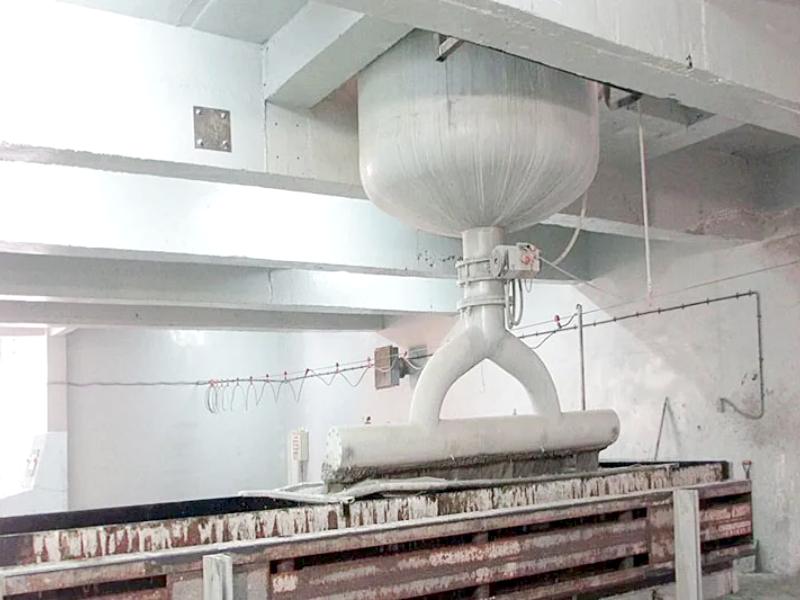
5. Tilting Cutter
Function: Cuts pre-cured billets into desired specifications with an accuracy of ±1 mm. Offcuts are recycled online.
Structure: Three sets of longitudinal, transverse, and horizontal steel wire frames; servo motors synchronize lifting and lowering, automatically compensating for wire wear.
Capacity: Cutting cycle ≤ 5 minutes/die; can cut 75-300 mm thickness, 600 mm standard length, or 1200 mm slabs.
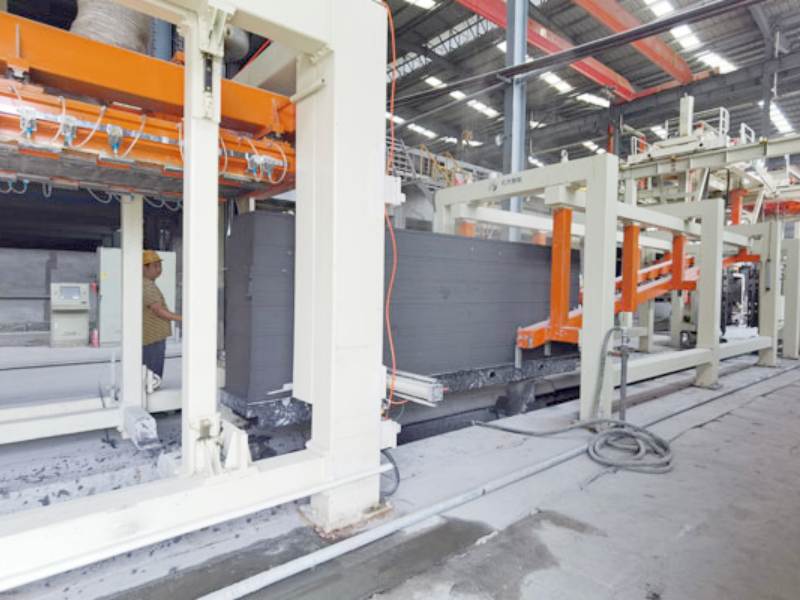
6. Autoclave
Function: High-temperature, high-pressure steam curing allows the green body to complete the hydrothermal synthesis reaction within 8 hours, increasing its strength by 5-8 times.
Specifications: Φ2.68×32 m or Φ2.85×38 m; design pressure 1.6 MPa, operating temperature 200°C; equipped with safety interlock and automatic blowdown.
Configuration: Each medium-sized line is equipped with 4-8 units, which can be connected in series or parallel. Energy-saving models include a waste heat recovery interface.

7. PLC Control Room
Function: Serves as the control center for the entire production line, offering features such as recipe management, parameter adjustment, process monitoring, energy consumption analysis, fault alarms, and remote app viewing.
Hardware: Reserved OPC UA interface for integration with the factory’s MES/ERP system.

8. Waste Gas Heat Recovery System
Principle: Autoclave exhaust gas at 160°C is preheated to 90°C via a heat exchanger, saving 8–12% of natural gas annually.
Configuration: Plate heat exchanger+circulation pump+automatic temperature control valve.

What is an Aerated Concrete Block?
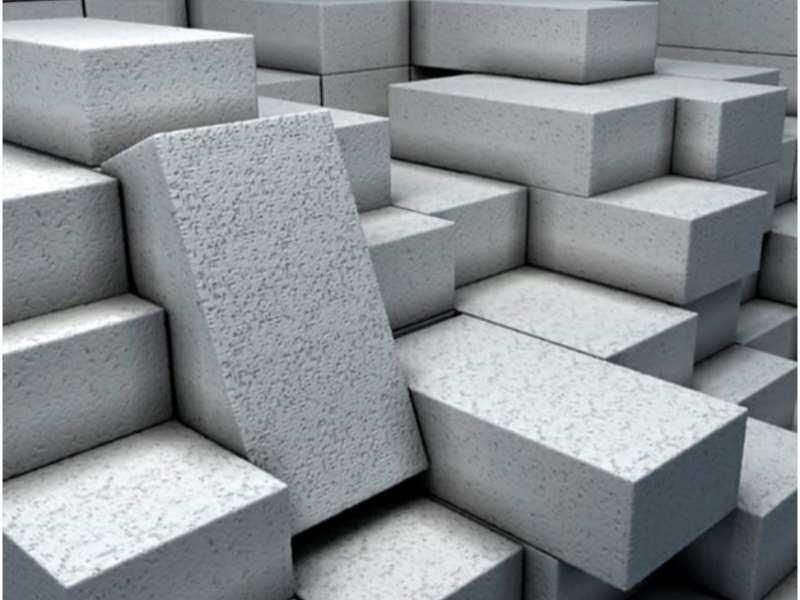
Autoclaved aerated concrete (AAC) blocks are a new type of building material, they are lightweight, porous, and high-strength.
Their unique internal pore structure gives them advantages like being lightweight, high-strength, thermal-insulating, fire-resistant, and sound-insulating.
They are an ideal choice for making buildings energy-saving and structurally safe.
Application of AAC Block
1. Civil Buildings
Used for internal/external walls, floor slabs, and roof slabs of residential buildings. It reduces building weight and improves seismic performance.
2. Commercial Buildings
Suitable for non-load-bearing walls of shopping malls, hotels, and office buildings. It has good thermal and sound insulation effects, boosting building comfort.
3. Industrial Buildings
Serves as wall and partition materials for factories and warehouses, meeting the special requirements of industrial production for building materials.
4. Special Buildings
Widely used in hospitals, schools, gymnasiums, and other places—thanks to its excellent fire resistance and environmental protection properties.
Features and Kelebihan Blok AAC
Ringan dan Kekuatan Tinggi
Its low density, only 1/3-1/4 that of ordinary concrete, effectively reduces the weight of buildings while maintaining high strength to meet structural requirements.
Penebat Terma
Its porous internal structure provides excellent thermal insulation, reducing building energy consumption by over 30% and improving energy efficiency.
Ketahanan Api Cemerlang
As a non-combustible material, it boasts a fire resistance limit of 3-4 hours, effectively slowing the spread of fire and protecting life and property.
Kalis Bunyi Cemerlang
Its porous structure effectively blocks sound transmission, enhancing the building’s sound insulation and creating a quiet and comfortable living and working environment.
Pembinaan Mudah
AAC blocks are precisely sized and can be sawed, planed, and nailed, making the construction process simple and convenient, improving efficiency and shortening the construction period.
Mesra Alam
The production process consumes industrial waste, reducing environmental pollution; and no harmful gases are released during use, meeting green building requirements.
Is AAC Block Making Profitable?
Yes, AAC block making can be profitable, but the level of profitability depends on several key factors. Let me break it down for you:
Profitability Overview
- Gross margins: 30%–60% (higher for hollow/solid blocks, lower for pavers)
- Payback period: 1.5–3 years (depending on scale and efficiency)
- ROI (Return on Investment): 20%–50% annually (in high-demand markets)
Key Factors Effecting Profitability
- Market Demand
- High demand: Urban construction, infrastructure projects, and government housing schemes drive sales.
- Low demand: Rural areas may have slower sales unless linked to government projects.
- Production Cost Control
- Raw materials: Cement, sand, aggregates (cheaper if sourced locally).
- Labor: Semi-automatic plants reduce labor costs.
- Energy: Efficient curing (steam vs. natural curing) impacts costs.
- Selling Price vs. Competition
- Retail prices (India, Africa, SE Asia):
- Hollow blocks: $0.50–$1.20 per block
- Solid blocks: $0.30–$0.80 per block
- Pavers: $0.80–$2.00 per block
- Bulk sales (to contractors): 10–20% lower but higher volume.
- Retail prices (India, Africa, SE Asia):
- Automation Level
- Manual plant: Low capex ($5K–$20K) but higher labor costs, lower output.
- Semi-automatic: Moderate capex ($20K–$100K), better efficiency.
- Fully automatic: High capex ($100K–$500K), lowest per-unit cost, best for large-scale operations.
- Government Policies
- Subsidies: Some regions offer incentives for eco-friendly blocks (e.g., fly ash-based).
- Regulations: Bans on clay bricks boost concrete block demand.
Services We Offer
- Perancangan & Reka Bentuk Projek
Provide overall planning and detailed design schemes for Aerated Concrete Block Making Machine based on client needs and actual conditions, including process design, equipment layout, and civil engineering design. - Bekalan & Pemasangan Peralatan
Supply full sets of Aerated Concrete Block Making Machine, and undertake installation and commissioning to ensure normal operation, meeting designed capacity and product quality standards. - Latihan Teknikal
Menawarkan latihan profesional untuk pengendali, juruteknik dan pengurus yang meliputi proses pengeluaran, pengendalian peralatan, penyelenggaraan dan pengurusan kualiti. - Perkhidmatan Selepas Jualan
Wujudkan sistem selepas jualan yang kukuh menyediakan panduan penyelenggaraan harian, penyelesaian masalah dan bekalan alat ganti untuk memastikan pengeluaran stabil yang berterusan. - Sokongan Teknikal & Naik Taraf
Menyediakan sokongan teknikal yang berterusan dan menawarkan penyelesaian peningkatan peralatan/transformasi teknikal berdasarkan keperluan pelanggan dan trend industri untuk meningkatkan kecekapan dan kualiti. - Kontrak Am EPC
Perkhidmatan EPC sehenti daripada reka bentuk, perolehan peralatan, pembinaan awam, pemasangan dan latihan kepada pengeluaran percubaan untuk pengalaman tanpa kerumitan.
